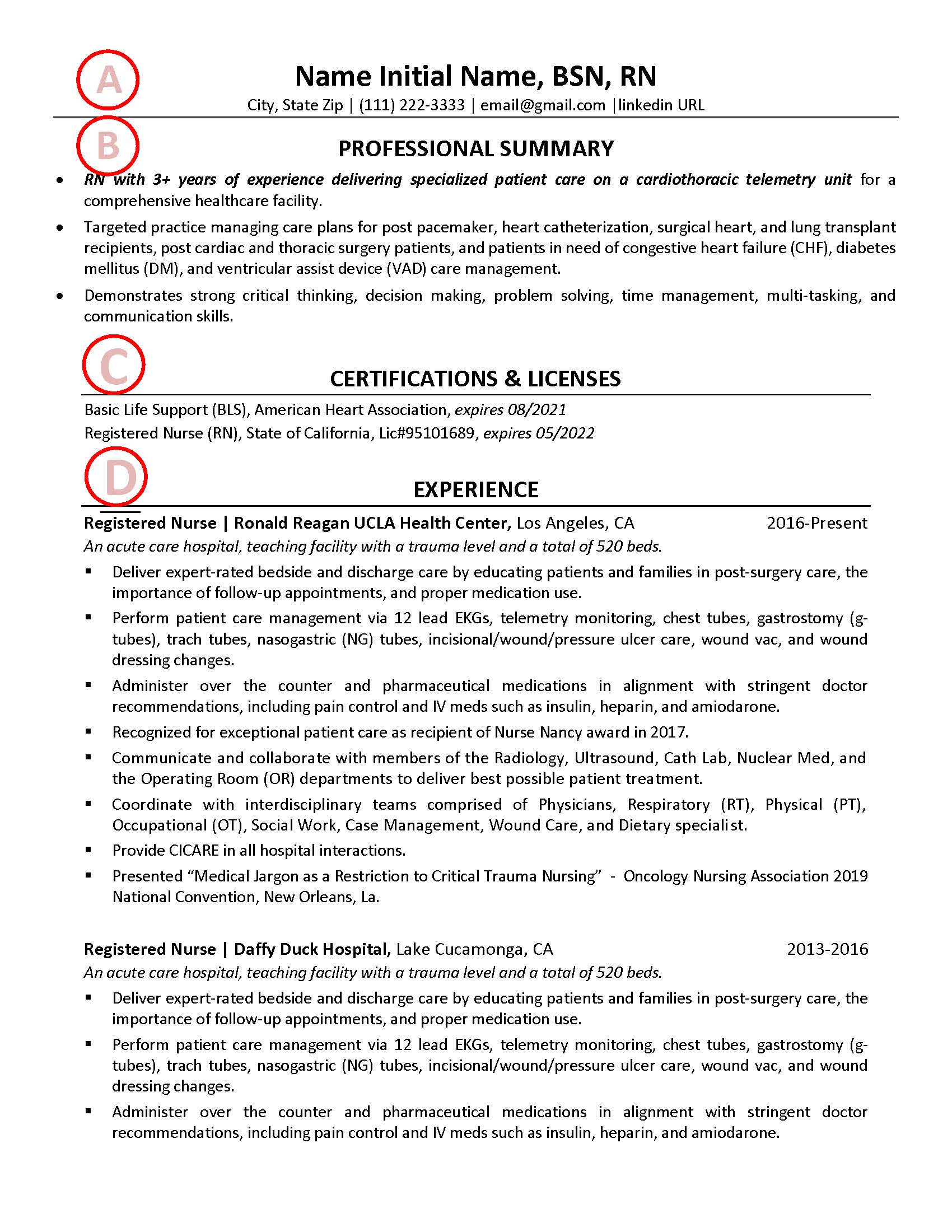
A successful resume gives the hiring manager reason to see you in the role. Do that by highlighting your experiences showing your ability to solve their problems and to do the job.
Highlight your value.
Emphasize what you have done, so employers can figure out what you can do.
Help the recipient connect the dots.
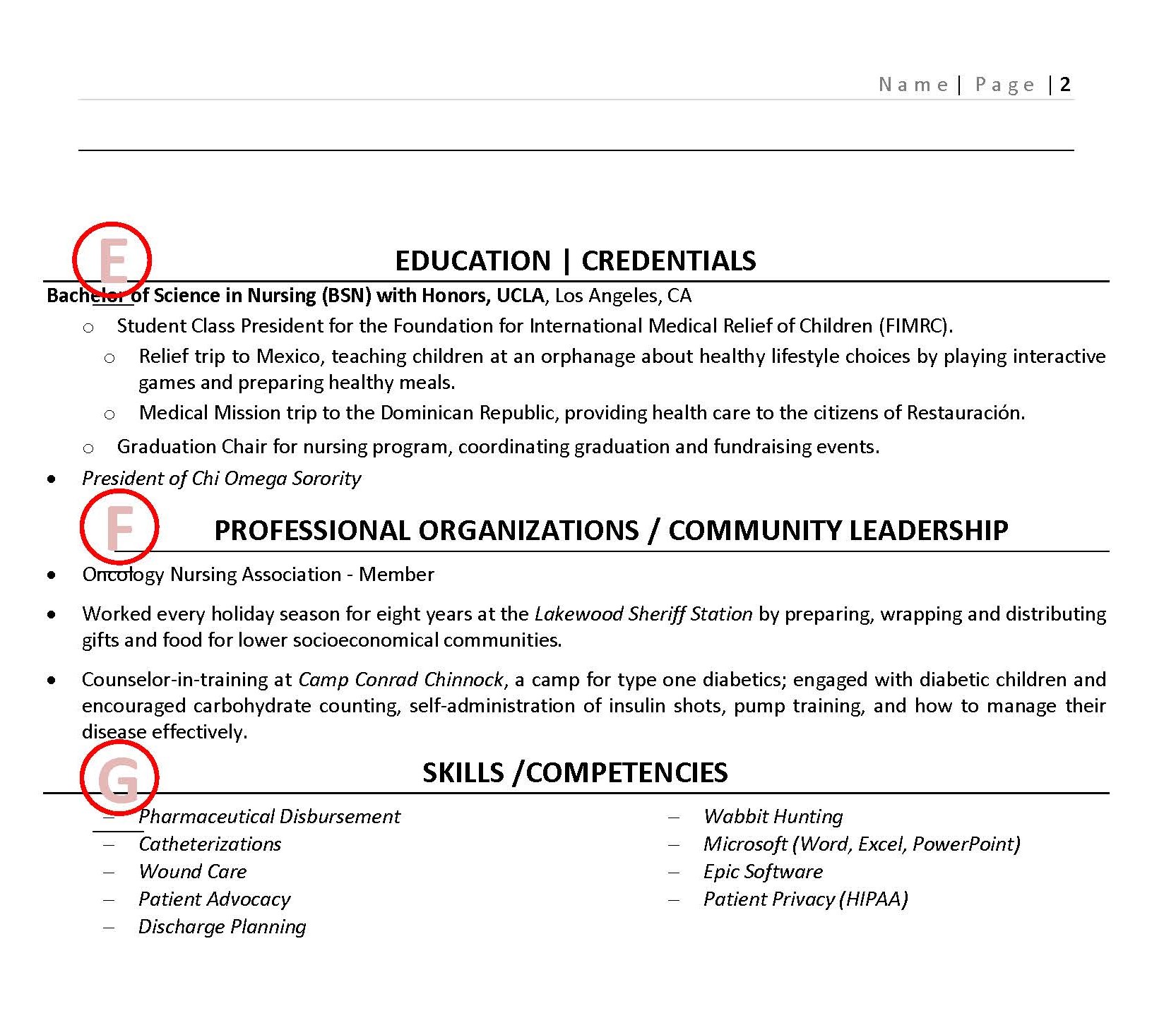
Parts of a Resume:
What are the parts of a resume? Here is what you need to start creating your customizable resume. Don’t be too concerned about the text in the sample resume. It is here to give examples of the formatting. The red, circled letters correspond between the descriptive text and the sections of the resume.
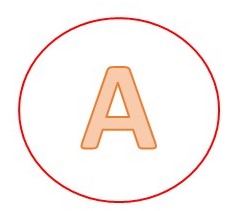
Contact information
This section can be considered as a letterhead. Even consider creating a letterhead, but don’t overdo it.
Contact information:
- Name: It should be what most people call you, unless people call you “Stinky” or “Bubba”. If your given name is William, but everyone knows you as Bill, include “Bill”. If you use your middle initial or middle name, include it.
- Credential after name:
- Degrees like PhD, MBA, JD are always OK. Especially if related to the job. The same with professional credentials like CPA or CFA.
- Address: Physical street addresses are becoming less common. Listing the city and state is usually acceptable. With GoogleMaps snooping is easy and you may not want to be judged by what your residence looks like. (You could use an address for a nicer house than yours. But that can lead to a bunch of other problems, so don’t). Where you lay your head at night isn’t quite as important as it used to be. Just make sure it is obvious you are close enough to get to the job.
- Communications:
- Phone: Use the number where you can be reached. Most people now use their cell phone for everything, so no need to say it is a cell.
- Email: In a job search, you need a professional email address, meaning your name followed by @gmail.com or similar.
- DO NOT use your current business email.
- DO NOT use an email address like: GizzardBreath298@yahoo.com.
- LinkedIn URL: They are going to look, so make it easy to find. Before you do this, edit your LinkedIn URL to a simple format that basically consists of your name. If you don’t know how to do this, contact me and I’ll send you instructions.
- Other social media: Don’t include unless you are using Facebook, Instagram, etc. professionally. If you haven’t already figured it out or been told, clean up your social media before you go on a job search. Skimpy clothing and drunkenness are not going to help you find work. And if they do, you don’t want that job.
- Motto: A simple professional core statement can help clarify what they are all about. If you truly have one, then consider using it. In my last search “Transforming Information to Knowledge” was mine.
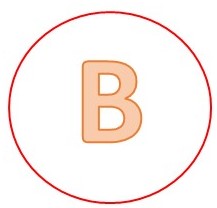
Summary
In days gone by, the first major section was entitled Objective. No longer. Every resume author has an object. It is to find a job. Hiring managers get that.
The summary is a brief or abstract of your career to grab the attention of the hiring manager. Having this at the top is like the blurb on a book. “Oh this sounds interesting. I can spend some time on this one”.
Highlight your value. A successful summary shows rather than tells what you contribute. It is a place to emphasize what you have done, so employers can figure out what you can do.
Avoid “hard working”, “innovative”, “goal oriented”. Instead show how you worked hard, examples of your innovation and how goals have guided your success. “Number one salesperson for company for 9 consecutive quarters” beats “highly success salesperson”. Give a brief highlight here and flesh out the same success story in your Experience section.
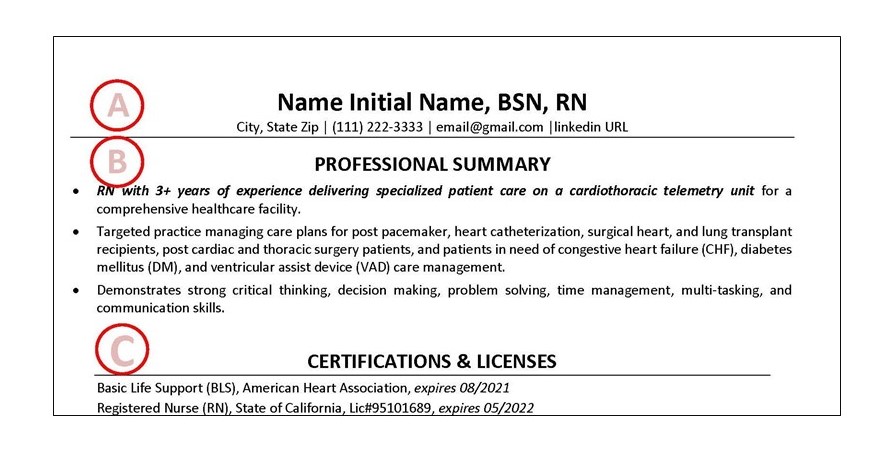
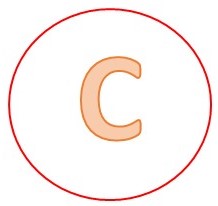
Certifications & Licenses
If the job requires a license issued by a governmental authority, such as those in medicine, the merchant marine or aviation, or a professional credential like a Certified Financial Advisor, then show you have it. The same is true if it is highly valued, but not mentioned in the listing. If you don’t have it, consider explaining why and how close you are to getting it in your cover letter.
Certifications are big deals in a lot of technical and computer fields. They may be more important than degrees, so include them.
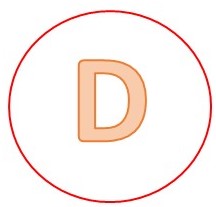
Experience
Here is where you show what you have done. A successful resume gives the hiring manager reason to see you in the role. Do that by highlighting your experiences showing your ability to solve their problems and to do the job. For instance, if frequent presentations are required, help them picture you successfully presenting. Where they have customer service needs, give them reason to think of you serving their customers. Upcoming posts will help you with this.
Bullet points followed by action verbs is the most powerful way to tell your story. Information in paragraphs requires additional work for the recipient. (Remember, make it easy for them).
Remember from the first part of this series, chronological resumes are your best choice. Most bullets should be under your most recent job, though your time in a particular job may alter that.
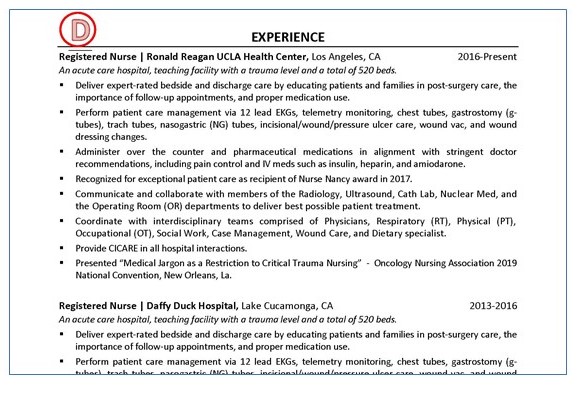
Internships or volunteer work can be considered real work if they rise to the level of real work. If you’ve done extensive computer work for a not-for-profit, consider counting it. Building websites or garden walls for your church, fraternity, or blood bank, is real work. Consider including it in Experience.
How far back should you go? Far enough to tell the story of your future success. Some people say no further back than 15 years. Don’t let that restriction keep you from including valuable experience further in the past. The important thing is showing how your experience connects to what you can do now and will do in the future.

OK. Take a rest.
There is a lot of information here. Pace yourself. Get some tea.

La la la la
. . . . . . .
Time to get back to work

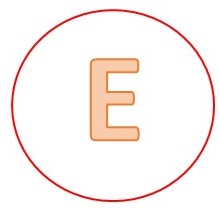
Education
Degrees: List each degree, the college which granted it, its location and the year earned. If it was a long time ago, consider omitting the date. The most recent degree earned should be listed first. If your thesis or dissertation relates to the job, consider including its topic.
In addition to a degree, did you do amazing things while you were in college. My brother-in-law founded a pub on his college campus. That was probably a better indication of his capabilities than his degree.

More than 50 % of all college grads are not working in their undergraduate field. Consider describing classes that explain why you are doing what you do. A guy I know who has a BS in mortuary science, now manages 6 tire stores. He got the job because of his business classes. Help the recipient connect the dots.
While some work requires a particular degree, realize that formal education becomes less important, the farther it is in the past. Consider that when writing this section.
If your degree isn’t necessary for the job, try to explain how it still helps. Degrees do indicate hard work even when they don’t relate. Spell out the initials (Masters of Business Administration vs MBA) for degrees and certifications.
High school is best left off if you have a college degree.
Professional Development and Continuing education
Use this section to indicate that you’re still learning. The ability to learn can be more valuable that what you already know.
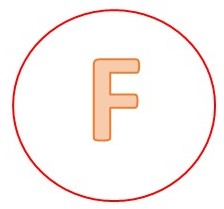
Other
Professional organizations
These serve 2 purposes. Work related organizations show your engagement beyond the office. Leadership roles can augment your portfolio. Do be circumspect about what organizations you list. (Engineers’ Club – YES, Ladies Knitting and Moonshining Society – NO.)
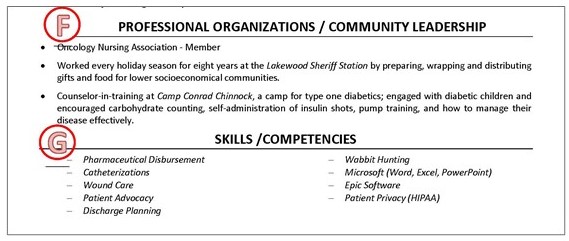
Articles, books, presentations, etc.
If you are a successful writer or speaker, share that. If the topic is germane, share titles or topics. Alternatively, if it relates to a particular job list it under Experience.
Personal interests
If you put anything here, select stuff that improves your profile. Knowing what the recipient’s interest are, can guide what you might wish to include. Avoid dangerous stuff like skydiving and lava surfing.
Volunteer activity
Include volunteer activity that relates to the job and the company. If community involvement is valued by the company, relate to that. Volunteering fits especially well for a not-for-profit job.
When choosing what to include think two hours per year manning the church rummage sale, probably won’t help. Chairing the rummage sale for 5 years and raising $25,000 might be worth including.
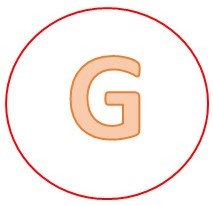
Skills
Almost everyone can use Microsoft Office. You can leave out unless the job listing indicates it is mandatory. If you claim to be an expert at Excel, you better be able to do Pivot Tables in your sleep. Think value added or an additional opportunity to mention.
Some formats put Skills directly under the Summary. I don’t think it is critical either way. If space is an issue show the use of the skills rather than listing them.
At the top of the second page of a physical, on paper resume, include your last name (maybe first) and “Page 2”. That way the recipient can associate your page 1 and 2 if they get separated.

References
DO NOT INCLUDE THE LINE “References available upon request. Whoever receives your resume knows you have a list of references and will share it, if asked. Make sure you do have such a list.
Those are the major sections of a 21st Century resume. Don’t fret too much about the exact order. Every expert claims this goes before that, etc. Neat, organized and leading the recipient to think of you as the best possible candidate is what is important.
The next posts will get into writing your resume and creating and using the source document for your a-la-carte resume.
If you haven’t read “It’s Time to Put Your Resume to Work – Part 1”, now would be a really good time to do so. Find it here.
If you need help with your job search, please reach out to https://www.crewsstrengths.com/pages/contact.html . And remember, “It’s Time to Put Your Strengths to Work”.